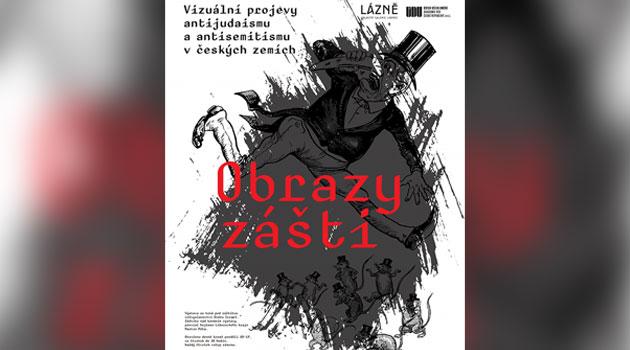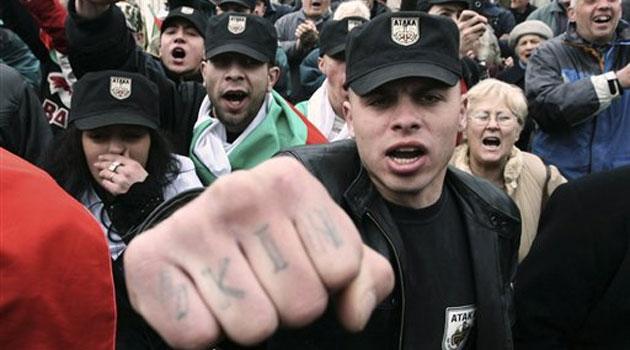Czech gallery holds exhibition of visual antisemitism from the Middle Ages to the present

Visitors to the new exhibition at the Liberec Regional Gallery, “Images of Malice” (Obrazy zášti), access it by walking through a “Gate of Laws” inscribed with all the criminal charges possible under Czech law that deal with defamation on the basis of race. Conceived in an untraditional way, the exhibition is dedicated to antisemitism as it has been conveyed through visual images that have been displayed in the Czech lands from the Middle Ages to the present.
Almost 200 works are on exhibit, including graphic designs for the cover of a French satirical magazine by renowned Czech modern artists such as František Kupka or Josef Váchal. Antisemitism is current today in visual images as well, according to the curator of the exhibition, Eva Janáčová.
“Latent antisemitism lives on in the Czech Republic. All statistics, all surveys show us that antisemitism is growing, and not just at the level of being verbalized, but also visually. On the Internet it is the most widespread,” the curator told the Czech News Agency.
The architecture of the exhibit corresponds to its subject matter. “If you look around, you’ll see tall panels in grey with these special barbs and thorns. Those metaphorically represent anti-Jewish grudges and hatred,” the curator said.
She also considers the entry gate to the exhibition to be a distinct element. “It’s inscribed with sections 355 and 356 of the Criminal Code, which clearly indicate that it is forbidden by law to defame a nation or race somehow,” she said.
The exhibition is one of the outputs of a four-year research project by the Art History Institute of the Academy of Sciences of the Czech Republic involving 10 experts from different academic workplaces. “One of the conclusions is that this is a problem that did not end together with the Second World War, for example. Another is the finding that even periods that are not customarily connected with distinct displays of antisemitism were times when it was nonetheless rather strong, for example, the First Republic. The third thing is that it is not just antisemitism that is a problem, but that the same kind of labeling of constructed enemies is transferred to other, different minorities and that this is a broader problem,” said another author of the exhibit, Jakub Hauser.
The exhibit features, for example, a drawing from the First Czechoslovak Republic (1918-1938) that interprets the Bolsheviks and the Soviet Union as the work of bloodthirsty, callous, cynical Jewish oppressors. Another image portrays a black marketeer and a Bolshevik in the context of the unavailability of goods after the First World War, when engaging in black marketeering, a commercial practice that was unfair, was most frequently attributed to Jewish traders or those considered Jews.
“Images of Malice” will be open until 2 January 2022 and features works borrowed from 40 different private collectors and public institutions. “Most of us go to galleries to see unusual art objects and to appreciate their beauty, harmony, or other positive values. You will not find anything like that at our exhibit. For the artefacts that appear beautiful at first glance, we have done our best to intentionally deconstruct them with regard to their anti-Jewish stereotypes and put them into the broader context of anti-Judaism and antisemitism in the Czech lands as displayed visually,” said the director of the gallery, Pavel Hlubuček.
